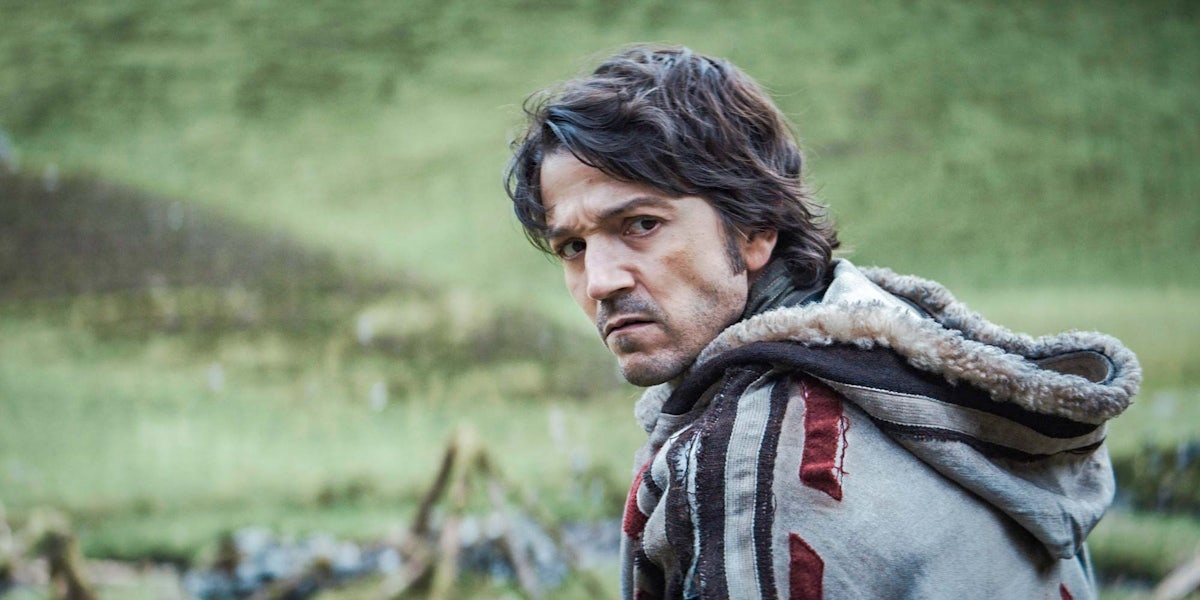This post includes spoilers for episode 4 of Andor, “Aldhani.”
Emulating the best of the Star Wars movies, Andor prioritizes visual worldbuilding, leaning into IRL allegories. The forests of Cassian’s homeworld, for instance, were strip-mined by a colonizing force. Episode 4 introduces another intriguing location with the planet Aldhani, where Cassian joins a team of anti-Imperial freedom fighters. Filmed in the Highlands of Scotland, this location takes inspiration from Scottish history.
Cassian’s first proto-Rebellion contact is Luthen Rael (Stellan Skarsgård), the leader of an underground movement to sabotage the Empire. After meeting Cassian on Ferrix, Luthen recruits him to infiltrate an Imperial stronghold on Aldhani. He’ll be the only paid member of a revolutionary cell led by Vel Sartha (Faye Marsay), positioning him as a cynical interloper among die-hard political radicals.
Episode 4 sets up an attack on an Imperial dam, with Vel Sartha showing Cassian a model of the Cruachan Power Station in Scotland—likely the main filming location for next week’s episode. She explains that the Empire dammed up the holy river of Nasma Klain, a name that sounds very similar to the Scottish clan Maclean, originating in the same area of the Highlands.
Star Wars has a long history of borrowing details from its real-world locations. Tatooine is named after the Tunisian city of Tataouine, utilizing real Tunisian architecture. Luke Skywalker’s temple on Ahch-To was filmed in a monastery on the Irish island of Skellig Michael, surrounded by flocks of puffins that were digitally altered to become porgs. And as Vel and Cassian hike across the Aldhani mountains, Vel explains the history of the region—a history that’s clearly inspired by the Scottish Highland Clearances.
“There used to be hundreds of settlements up here,” says Vel, as Cassian looks at the ruins of a village. “Forty thousand Aldhanis all across the highlands. They were here for centuries, but it only took the Empire a decade to clear them out.”
“Killed them?” asks Cassian. “No,” says Vel. “Drove them out. There’s an Enterprise Zone in the lowlands. Factories, new towns, Imperial housing.” Later we learn that like Cassian’s homeworld Kenari, Aldhani has a native language that’s now been superseded by Basic, echoing the way Gaelic-speaking Scots were driven south by English-speaking landlords during the Highland Clearances.
In the 18th and 19th centuries, the Clearances saw thousands of Highland farming communities be evicted and forcibly relocated—to different towns, to industrial cities like Glasgow, and to British colonies in North America and Australia. Obviously, this was a more complicated situation than just “evil landlords kick people out of their homes,” influenced by a number of factors like population changes, famines, boom and bust cycles for local industries, and the Industrial Revolution. But the Clearances did mark the end of a way of life, and when these Highland families reached their new homes, they were often met with poverty, discrimination, and slum conditions.
In just a few lines, this conversation between Vel and Cassian sets out a similar scenario, tying into other depictions of the Empire destroying homes and natural habitats to make way for military outposts. In turn, this overlaps with the way Star Wars uses the dark side of the Force as a metaphor for pollution, destruction, and violence.
Good guys live close to nature; bad guys build toxic factories and superweapons, destroying trees and water supplies in the process. Here on Aldhani, there’s an immediate contrast between the rebels’ little farming village (complete with alien sheep) and the brutalist design of the Imperial dam.
During the previous live-action Star Wars shows, I was hardly the only person to complain about disappointingly low-rent production values. In addition to their reliance on ugly in-studio VFX, The Mandalorian, Obi-Wan Kenobi, and Boba Fett seemed uninterested in creating interesting locations. Occasional moments of aesthetic flare (Mon Calamari fisherman sweaters; Luke Skywalker’s Jedi school) were overshadowed by bland backdrops and repeated returns to Tatooine. By comparison, Andor comes close to the visual sophistication of the movies. The color palette is meaningful. The production design feels authentic and lived-in. And with locations like Aldhani, a couple of lines of dialogue become the tip of the iceberg for more complex worldbuilding beneath the surface.
